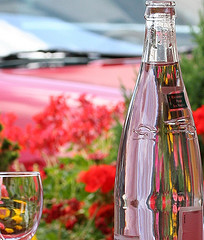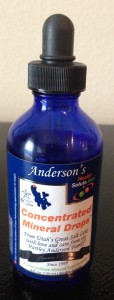 It’s summer time, we’re out and about and we’re probably not drinking enough H2O. I’ve discussed dehydration HERE and the suffering that takes place after a bender, but even for those who aren’t teetotalers, hydration affects us all, especially during these steamy hot months.
It’s summer time, we’re out and about and we’re probably not drinking enough H2O. I’ve discussed dehydration HERE and the suffering that takes place after a bender, but even for those who aren’t teetotalers, hydration affects us all, especially during these steamy hot months.
Why is hydration so important?
It’s not as sexy as planning, preparing and devouring healthy nourishing foods, and let’s face it, water can be boring, especially in a world of sugary sodas, Starbucks frappacinos and Monster energy drinks. But those poor underrated molecules are basically the glue that holds us together. The fact is, WE ARE ESSENTIALLY WATER. Our bodies are comprised of 50-60% water. Our blood composition is around 90% water. Do you enjoy having smooth running, pain free joints (or lament the fact that you don’t)? Cartilage is roughly 85% water. Every cell in the body needs water to function. Proper detox requires water. Biochemical reactions require water. Digestion requires water. Fat loss and metabolism require water. Cellular oxygen and nutrient transport require water. Mental acuity and physical performance require water. Enjoy easy breathing? Lungs need moisture to intake oxygen and outgas carbon dioxide. Have I bored you to tears yet? I hope not, because you need the liquid from those precious little teardrops for all those functions I listed above! In a nutshell, water is pretty darned important.
Most of us don’t even realize when we’re dehydrated. Chronic low level dehydration has become so common we just assume the stress of every day life and lack of sleep are what make us feel like crap. But your water intake has a major effect on how you look, feel and perform. Mild to moderate dehydration is likely to cause decreased urine output and constipation (which means your body isn’t detoxing as efficiently as it should and your body builds up with toxins that slow you down and make you tired, irritable and sick), dry skin, headaches and dizziness (both of which many commonly believe is just from exhaustion, when in reality you may not have given your body the fuel it needs to keep running smoothly). Severe dehydration can cause irritability and confusion, lack of sweating and the inability to regulate temperature (especially dangerous for those involved in high intensity outdoor exercise and pregnant women), shriveled and dry skin that lacks elasticity, low blood pressure, rapid heartbeat, rapid breathing, fever, delirium, unconsciousness, and even death.
So what does this mean for us if we’re looking to perform at our physical peak or shed some unhealthy pounds?
What’s the big deal if we limit ourselves to a few swigs when we get thirsty during a sweat session? The risk of dehydration can be a major problem for poor physical performance. Any outdoor summer sport where the temperature soars and you end up soaked in sweat should be a red flag that extra hydration is necessary. Crossfitters who often exercise in “boxes” without air conditioning should take special notice of how they feel before, during and after a workout and up their water intake as necessary. And let’s not forget that from air conditioned treadmills to winter time sports, all workouts come with a hydration expenditure (just because the sweat evaporates quickly and doesn’t soak your t-shirt doesn’t mean you don’t need to replace your fluids!)
So what IS the big deal for your physical performance and weight loss goals if you aren’t getting enough water? When you lose electrolytes through sweat you decrease your body’s electrical muscle communications and you lose muscle power. Say goodbye to getting that new 1 rep deadlift max or building that extra few pounds of metabolism-increasing muscle mass. Dehydration also leads to muscle adhesion. Layers of muscle strata are supposed to glide over each other like silk, but when they get hot, dehydrated and compressed (especially for desk jockeys who sit on their rears all day and spend most of their time in one stationary position) those muscle fibers stick together, severely limiting mobility. Say goodbye to flexibility and hello to all kinds of aches and pains from a disorganized, slumpy-postured, ill-functioning physical frame. If that’s not enough, studies have shown being dehydrated by just 5% can decrease physical and mental performance by 30% and chronic dehydration of just 2.5% can reduce the capacity for high intensity exercise by as much as 45%!!! For anyone looking to set a PR or put a competitive time up on the board, these are HUGE numbers and that performance boost you’re looking for may not come from a protein shake or an energy bar, but from the simple yet crucial hydration of your cells!
If you’re trying to lose weight, it’s incredibly important to stay hydrated.
In a state of dehydration, the kidneys have to work overtime, and the liver has to pitch in to help with the load. When the liver is occupied with its on-call kidney duties, it slows down the conversion of stored fat to energy, which means you aren’t burning fat efficiently. Not to mention that in a state of dehydrated lethargy where your physical exertion potential has been dropped by nearly 50%, your workout efforts will be much less productive, slowing down any weight loss progress you hope to achieve.
Proper hydration can also prevent one of the most annoying workout pains, muscle cramping. If you’re dealing with cramping during or after a workout, you may want to increase your potassium, magnesium, calcium and sodium intake. The fluid surrounding our cells that enables intercellular communication and controls muscle contractions requires all four of these minerals (which are quickly lost during sweating).
H20 protects your noodle! Although it’s outside the scope of basic performance and wellness, studies have also shown that a hydrated brain actually receives LESS DAMAGE and recovers quicker from traumatic brain injury then a dehydrated brain (due to more bobbling about in the craggy boney structure of the skull when the brain is shriveled and dehydrated). That’s some pretty significant protection for your noggin! So drink up and protect those precious brain cells from the unexpected!
So how much of the wet stuff do we need?
Dr. Kelley Starrett, physical therapist and the creator of MobilityWOD, recommends ½ body weight in ounces each day as a baseline. He recommends if you drink diuretics such as coffee/tea, sugary drinks, or alcohol you’ll need additional fluids to get you back to base. Keep in mind if you are eating a nourishing diet rich in fruits and vegetables, roughly 20% of your daily water needs are provided by the water content in these foods.
Also pay attention to your hunger and thirst. Often times our body’s lines of communication get crossed and if we aren’t paying close attention we think we are hungry when in fact our body is signaling that we need more water. A quick way to judge if you’re on track is to check your urine. If it’s light yellow you’re most likely on target. Clear (and often frequent) urine is a sign that your body is not processing the water correctly and you may be low on electrolytes. In extreme situations (where large amounts of water are consumed without replacement electrolytes) this imbalance of can lead to hyponatremia (commonly referred to as “over-hydration”), where the electrolytes have become so diluted that blood volume decreases, which releases an anti-diuretic hormone which stimulates severe water retention into the cells, which can lead to congestive heart failure, liver failure, kidney failure, pneumonia, excess water in the brain, and even death. Conversely, the appearance of “apple juice” or darker urine indicates you aren’t hydrated enough.
What’s the deal with trace minerals and salt? 
As I mentioned above, magnesium, potassium, sodium and calcium are all necessary minerals for proper hydration. Salt is a tricky subject to approach because we live in a world full of products loaded with excess sodium and a society of high blood pressure managed through medication. If you are eating a nourishing diet full of natural, unprocessed, whole foods, liberal salt for flavor and additional sodium for performance should not be an issue. If you have any specific concerns (every body is different and everyone has different needs and tolerance levels) please consult your doctor about your health situation. For someone without sodium/blood pressure concerns, adding a pinch of high quality minimally-processed sea salt (such as RealSalt) and trace mineral drops such as ConcenTrace or Anderson’s Concentrated Mineral Drops can be a wonderful way to ensure that all hydration is being properly utilized by the body and trace minerals lost so easily in sweat are routinely replaced. Epsum salt baths and magnesium oil massage are both excellent ways to take in extra magnesium, but watch out for the purity of the brand, as some oils are reported to contain mercury. I’m partial to this brand for a good soak in the tub.
There are many whole foods that also provide a rich assortment of easily absorbable minerals.
- Bone broth is a great source of calcium and magnesium, which helps control muscle contraction and relaxation, and amino acids for muscle and joint repair.
- Coconut water contains high levels of potassium, as well as magnesium, sodium, calcium and phosphorus which prevent muscle spasms and cramping.
- Fermented foods such as pickles (and their brine) and sauerkraut are a good source of sodium.
- Black strap molasses contains magnesium and potassium.
- Leafy greens, dark chocolate, nuts, halibut, and pumpkin seeds are excellent sources of magnesium.
- Avocados, sweet potatoes, white potatoes, bananas, chard, and spinach are all rich in Potassium.
For athletes that deal with extreme exertion, endurance and excessive heat, supplemental mineral/electrolyte sources may be necessary. Does this mean Gatorade? I suggest caution when using premade sports drinks, especially those with lots of additives and preservatives. For example, here’s the ingredient list for Gatorade Orange taken from their website: WATER, SUCROSE, DEXTROSE, CITRIC ACID, NATURAL FLAVOR, SALT, SODIUM CITRATE, MONOPOTASSIUM PHOSPHATE, GUM ARABIC, YELLOW 6, GLYCEROL ESTER OF ROSIN, BROMINATED VEGETABLE OIL. Yikes! Chemical colorings and vegetable oil. Not something I want to feed myself to refuel after I have just punished my body. A gentler option is to make your own drink. You can find one recipe I highly recommend HERE.
So what about the quality of the water? 
Does it matter if we’re getting it from the tap, a bottle or a filter? There are definitely some sources that are cleaner than others. Not everyone has access to a reverse osmosis filtration system, but there are steps you can take to ensure your water is as clean as possible.
***Note, I struggled greatly with how much information to include about water quality. How deep down the rabbit hole do I want to go, and how do I keep on track with the message about just getting enough water down the ol’ pie hole every day? I decided that since my goal is to educate and empower people to make their own informed decisions about their health and wellbeing, I would be remiss to leave out at least at least a cursory discussion on the important, albeit complex issue of the quality of that water we’re ingesting, if only to encourage debate and further thought on the topic. ***
When it comes to water quality and filtration, it’s no surprise that city water often contains numerous chemicals (some intended and some unintended). Let’s be clear, a clean source of pathogen-free drinkable water is a wonderful part of our society, and when you consider times in history and places in the present that don’t have access to CLEAN water it’s a DIRE situation. But there are effects from ingesting these chemicals and these additives should be understood and their effects mitigated as much as possible.
Because each one of these issues has enough research and controversy behind it to warrant their own individual articles, I have chosen not to go into depth on the analysis in this article. Instead I will state some of the current concerns with each issue, and what my family has decided to do to mitigate potential problems. I encourage you to seek out additional information on these topics, become a part of the discussion both online and in your own community, and advocate for clean water sources for yourself and your families.
- Chlorine: Chlorine is used as an antimicrobial agent to kill pathogens, making water potable. It kills such nasty beasts as giardia, typhoid fever, dysentery, cholera and Legionnaires’ disease, among others. However, this potent chemical comes at a serious cost to our long-term health. In the process of destroying pathogens, Chlorine creates Chloroform, a known carcinogen, as a byproduct. This is toxic whether ingested, inhaled, or applied topically (which means your nice hot baths and steamy showers also put you at risk!). Research has shown such exposure may increase the risk of bladder, kidney and rectal cancers, as well as miscarriages, birth defects and low birth weight. It may also increase risk of asthma, and respiratory track irritation, decreased liver function, and weakened immune system. There is an argument that our bodies are able to filter out at least some of the ingested Chlorine, but that doesn’t seem to hold true for the baths and showers where the Chlorine bypasses the digestive system. My family has chosen to use a Berkey water filter for our drinking water, a chlorine filter on our shower, and a vitamin C powder for bath water to eliminate/deactivate the Chlorine.
- Fluoride: This is a VERY hotly contested topic. Is it a toxic monster chemical that contributes to bone problems ranging from brittleness, loss of bone mass, bone deformities and various cancers, or is it the savior of modern day teeth (and why do modern day teeth need saving)? Do we need to ingest it on a systemic level or just apply it to our teeth? Should children apply or ingest it? What about adults? The science is very indeterminate and even amongst the most die-hard researchers and natural lifestyle advocates this is a topic of split decision. As a primer I recommend reviewing these different takes on the topic:
http://www.westonaprice.org/traditional-diets/ancient-dietary-wisdom
and
and
http://thepaleohygienist.com/2012/08/30/fluoride-facts-controversy-science/
My family has chosen to avoid fluoride toothpaste, rinses, and foam treatments as well as systemic treatment through drinking water. We have opted instead to focus on avoiding the major causes of tooth decay which we do have control over and encourage the strength of healthy bones and teeth with nourishing foods. We avoid cereal grains, juice and soda as well as heavy doses of sugar. The pasty, sugary carbs stick around in the mouth where salivary amylase breaks down the sugar into organic acids, and those organic acids cause damage to teeth, creating dental caries. Grains and sugar also require numerous minerals in order to be processed, resulting in mineral malabsorbtion and mineral stealing, which can lead to weakened bones and teeth. We also focus on nourishing foods containing vitamins A, D, K and E which strengthen the bones and encourage bone development. Sources high in these vitamins are organ meats, egg yolks, pastured dairy, and cod liver oil (my family uses GREEN PASTURES and CARLSON’S).
Besides the chemicals that our society has collaboratively chosen to introduce into the water supply, there are some other nasties that have found their way into the system that we should also be aware of. Our industrial society has created chemical runoff from pesticides, herbicides, fungicides, chemical fertilizers as well as industrial waste products that find their way into our rivers and streams, and while water sanitation plants attempt to filter these chemicals out, there is growing concern that many of these chemicals are not being entirely filtered, and may make their way to your tap. These chemicals can have many adverse affects, perhaps one of the most common being endocrine disruption (they mimic hormones, especially estrogen). As an added bonus, there are reports that our water contains rising hormone levels (especially estrogenic compounds) due to the constant exposure so many of us have to estrogenic chemicals through plastics as well birth control pills and hormone therapy. The BPAs in plastics have also been linked to increased cardiovascular disease, diabetes, decreased thyroid levels in male babies, childhood asthma, and childhood behavior and learning disabilities. Avoiding exposure through plastic water bottles and food containers (especially plastic that has been heated) is commonly recommended (advice my family follows religiously), although there is still concern whether filtration systems effectively remove all of these chemicals. While not a perfect solution, water filters do remove a great deal of problematic compounds and I encourage you to consider filtration
I encourage you to contact your local water provider and ask for an analysis of your local water supply. Such an analysis is typically required to be conducted regularly in most jurisdictions and citizens should be able to access such information. You can also see how your water ranks nationally HERE. In addition, the Environmental Working Group has reported that more than half of the chemicals they detected through their extensive testing are not subject to any regulations and so there are NO safe limits established and no regulations limiting the amount of these chemicals that can legally be present in the water supply. Another good reason to filter!
As a recap, there are many reasons to use a water filtration system, and many different methods to obtain the desired results. As mentioned above, my family has chosen a Berkey filter, which eliminates bacteria and cysts as well as numerous chemicals and heavy metals from water. Coupled with mineral drops and sodium as desired we feel this creates the cleanest, most balanced drinking source available to us for our budget. For those with money just burning a hole in your pocket and wishing to go hog wild (or just not interested in filling the tank every day or two) I recommend looking into an installed reverse osmosis water filtration system. Because the RO system is so efficient at filtering water, often it removes even healthy trace minerals, so it’s important to note that if using one of these systems added trace minerals may result in a more nutritionally complete option. As a side note, when it comes to bottled water, beware! Beyond the issue of the BPA in the plastic, many bottled waters are merely bottled tap water as opposed to fresh unadulterated spring water, which means that you are being subjected to all the same chemicals as your plain old tap water.
Special considerations for hydration:
For expectant mothers, hydration handles numerous additional jobs for both you and your little one. Proper hydration is necessary to produce amniotic fluid, create additional blood volume, build new tissue, carry nutrients (to you and to baby), help with digestion, and flush out your wastes and toxins as well as baby’s! It also helps manage some of those most uncomfortable symptoms that come along with that bundle of joy, such as relieving constipation/hemorrhoids, relieving morning sickness, softening skin, reducing edema and decreasing risk of both urinary tract infections and preterm labor.
Those who have certain conditions such as diabetes or kidney disease may require a different hydration estimation based on their body’s capacity to process the fluids. As always, I’d like to remind everyone that I am not a licensed physician. This article is designed for general discussion only and not intended to diagnose or treat any potential ailment. You should always do your own research on potential health conditions, and find a physician willing to work with you as a partner in the exploration and treatment of any condition you believe you may be suffering from. See HERE for help on finding the right physician for you.
Take away tips:
- Drink half your weight in ounces each day PLUS replacement for fluids lost during workouts.
- Be sure to eat a wide variety of nourishing foods such as bone broth, coconut water, pickles, sauerkraut, molasses, leafy greens, dark chocolate, nuts, halibut, pumpkin seeds, avocados, sweet and white potatoes, and bananas for water and electrolyte replacement.
- Filter water, both drinking and bathing, if you are able.
- Beware of bottled tap water.
- Consider adding salt and mineral drops routinely to your drinking water to improve cellular absorption of water.
- Treat yourself to an Epsom salt bath or magnesium oil rub to avoid and treat muscle cramps.
- In cases of extreme exertion and sweating, supplement with additional electrolytes such as homemade sports drinks, molasses, and additional nourishing foods.
- Pay attention to your mood, energy, thirst and hunger levels.
- Speak to your doctor if you have any concerns about dehydration or underlying health concerns affecting your hydration capabilities.
Photo credit: jenny downing / Foter / Creative Commons Attribution 2.0 Generic (CC BY 2.0)
 Nourished and Grounded Nutritional and Lifestyle Consulting, Functional Diagnostic Nutrition Practitioner, and MTHFR Expert
Nourished and Grounded Nutritional and Lifestyle Consulting, Functional Diagnostic Nutrition Practitioner, and MTHFR Expert




4 comments
Pingback: Paleo Creamy Butternut Squash Soup with Bacon | Nourished and Grounded
Pingback: Guide to Paleo Without Your Partner |
Pingback: Is your soap making you sick and fat? A plea for paleo skincare | Nourished and Grounded
Pingback: Happy Anniversary, we've reached the terrible twos! - Nourished and Grounded